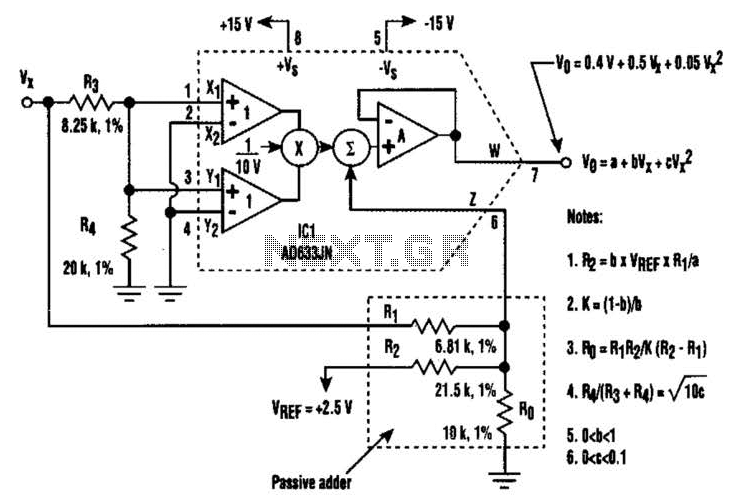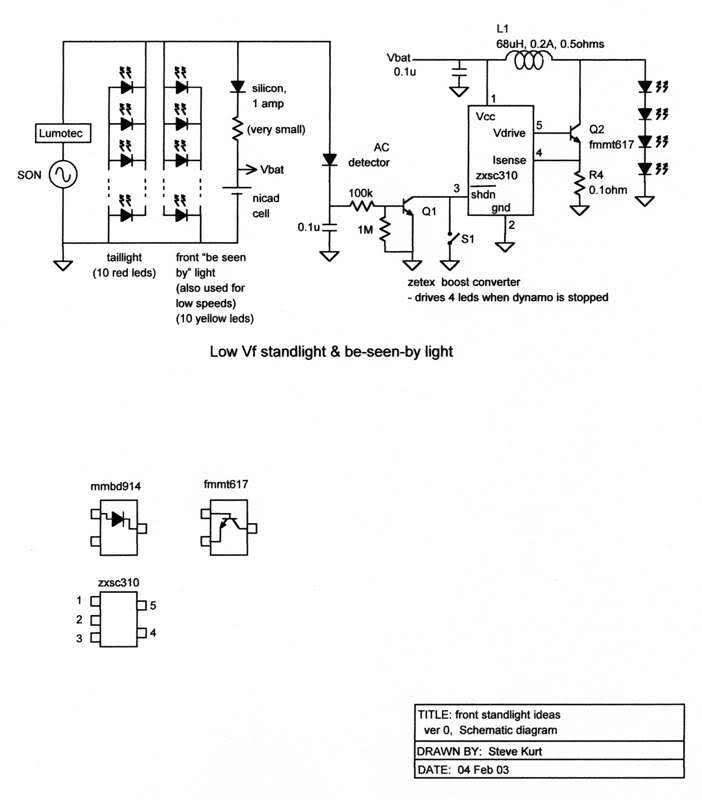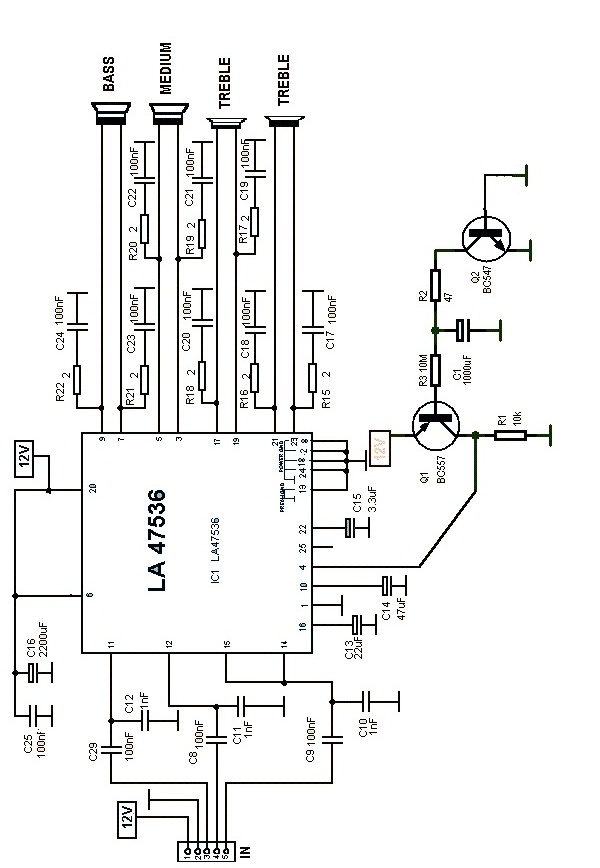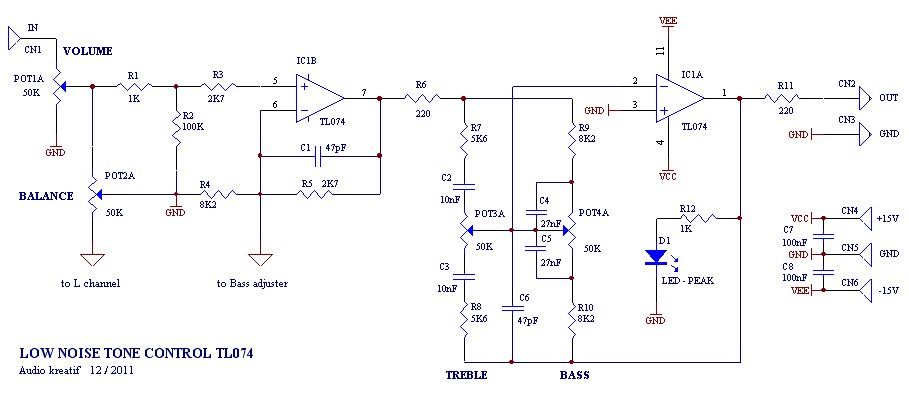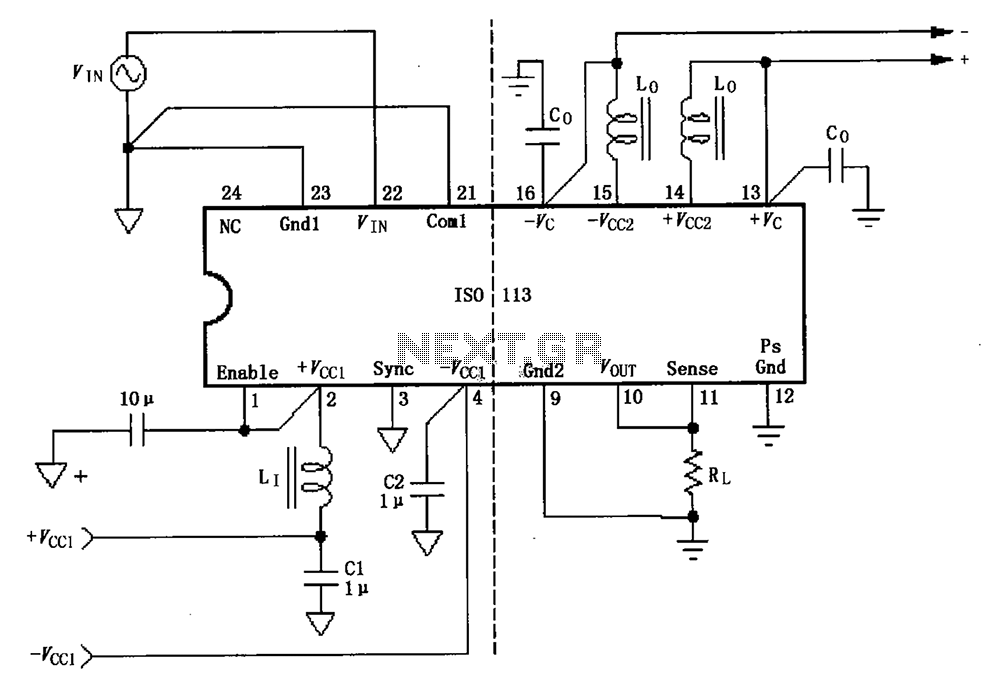
Time delay relay circuit
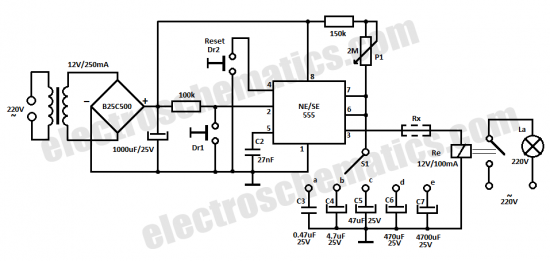
This time delay relay circuit is constructed using the NE/SE555 integrated circuit, manufactured by Intersil, which incorporates a precision timer. The circuit exhibits stability against temperature variations of 0.00.
The NE/SE555 timer IC is a versatile device widely used in various timing applications, including time delay relays. In this specific circuit configuration, the NE/SE555 operates in monostable mode, where it generates a single output pulse in response to a triggering event. The duration of this output pulse is determined by external resistors and capacitors connected to the timing pins of the IC.
To design the time delay relay circuit, the following components are typically included: the NE/SE555 timer IC, a resistor (R), a capacitor (C), and a relay. The resistor and capacitor values are selected based on the desired time delay. The time delay (T) can be calculated using the formula T = 1.1 * R * C, where R is the resistance in ohms, and C is the capacitance in farads.
The relay serves as the output device, which can control larger loads based on the output from the NE/SE555. When the circuit is triggered, the NE/SE555 sends a signal to the relay, activating it for the predetermined time delay. This feature is particularly useful in applications such as automatic lighting controls, HVAC systems, and industrial automation.
The stability of the NE/SE555 timer against temperature variations is critical for maintaining consistent timing performance. While the stated stability is 0.00, it is essential to consider the operating temperature range and the tolerances of the external components to ensure reliable operation in varying environmental conditions.
In summary, this time delay relay circuit utilizing the NE/SE555 timer offers a reliable solution for time-dependent control applications, leveraging the precision and stability of the integrated circuit to achieve accurate timing functions.This time delay relay circuit is built with IC NE/SE555, produced by Intersil which contains a precision timer. Stability to temperature variations is 0.00. 🔗 External reference
The NE/SE555 timer IC is a versatile device widely used in various timing applications, including time delay relays. In this specific circuit configuration, the NE/SE555 operates in monostable mode, where it generates a single output pulse in response to a triggering event. The duration of this output pulse is determined by external resistors and capacitors connected to the timing pins of the IC.
To design the time delay relay circuit, the following components are typically included: the NE/SE555 timer IC, a resistor (R), a capacitor (C), and a relay. The resistor and capacitor values are selected based on the desired time delay. The time delay (T) can be calculated using the formula T = 1.1 * R * C, where R is the resistance in ohms, and C is the capacitance in farads.
The relay serves as the output device, which can control larger loads based on the output from the NE/SE555. When the circuit is triggered, the NE/SE555 sends a signal to the relay, activating it for the predetermined time delay. This feature is particularly useful in applications such as automatic lighting controls, HVAC systems, and industrial automation.
The stability of the NE/SE555 timer against temperature variations is critical for maintaining consistent timing performance. While the stated stability is 0.00, it is essential to consider the operating temperature range and the tolerances of the external components to ensure reliable operation in varying environmental conditions.
In summary, this time delay relay circuit utilizing the NE/SE555 timer offers a reliable solution for time-dependent control applications, leveraging the precision and stability of the integrated circuit to achieve accurate timing functions.This time delay relay circuit is built with IC NE/SE555, produced by Intersil which contains a precision timer. Stability to temperature variations is 0.00. 🔗 External reference
